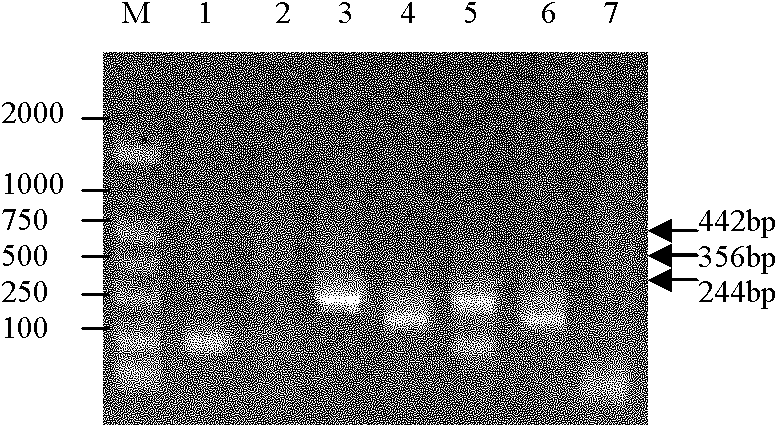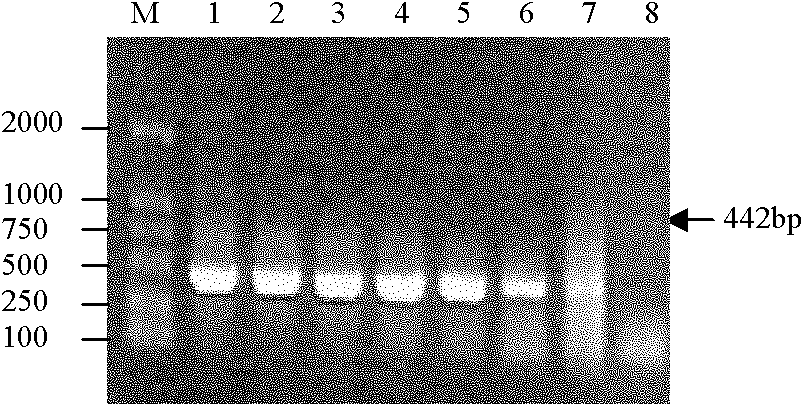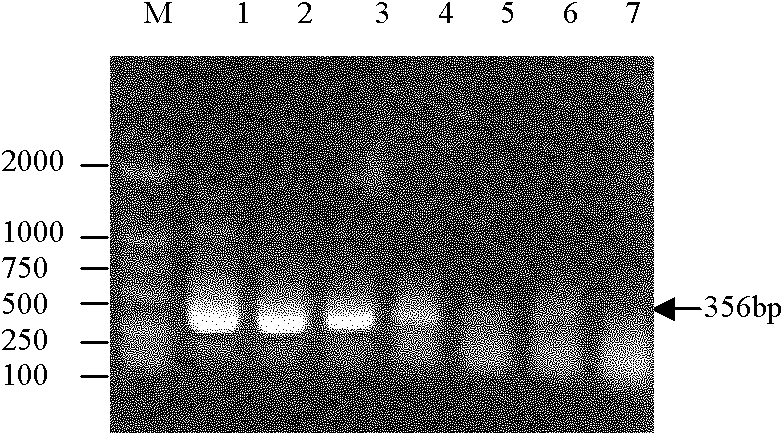Fluorescent PCR (polymerase chain reaction) detection method for identifying traditional strain and highly pathogenic strain of PRRSV (porcine reproductive and respiratory syndrome virus)
A technology for highly pathogenic strains and respiratory disorders, applied in the field of biological detection, can solve the problems of inability to quantitatively measure samples, and achieve the effect of accurate identification
- Summary
- Abstract
- Description
- Claims
- Application Information
AI Technical Summary
Problems solved by technology
Method used
Image
Examples
Embodiment Construction
[0050] The present invention will be further described below in conjunction with the accompanying drawings and specific embodiments, but not as a limitation of the present invention.
[0051] 1. Preparation materials:
[0052] 1.1 Plasmids and strains
[0053] The plasmids (TJ-H1 nsp2-T and TJ-H3 nsp2-T) of the nsp2 genes of the highly pathogenic PRRSV strain TJ-H1 and the traditional strain TJ-H3 have been cloned by our laboratory (published in "Animal Medicine Progress", No. 31, 2010, paper titled: "Clone and genetic evolution analysis of PRRSV Tianjin isolate Nsp2 gene", and the two plasmids can be provided to the public), Genbank accession numbers are GQ923891, GQ923892, GQ923893 ( GQ923891 and GQ923892 are highly pathogenic strains TJ-H1, and the homology reaches 100%; GQ923893 is the traditional strain TJ-H3). Twelve sera positive for porcine reproductive and respiratory syndrome virus antibodies were provided by the Tianjin Animal Disease Prevention and Control Center...
PUM
 Login to View More
Login to View More Abstract
Description
Claims
Application Information
 Login to View More
Login to View More - R&D
- Intellectual Property
- Life Sciences
- Materials
- Tech Scout
- Unparalleled Data Quality
- Higher Quality Content
- 60% Fewer Hallucinations
Browse by: Latest US Patents, China's latest patents, Technical Efficacy Thesaurus, Application Domain, Technology Topic, Popular Technical Reports.
© 2025 PatSnap. All rights reserved.Legal|Privacy policy|Modern Slavery Act Transparency Statement|Sitemap|About US| Contact US: help@patsnap.com



